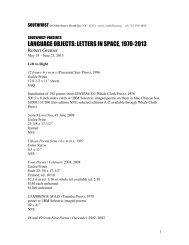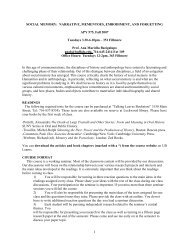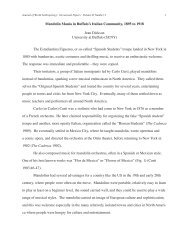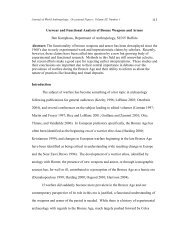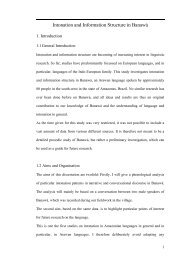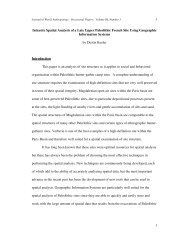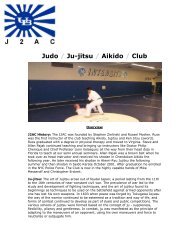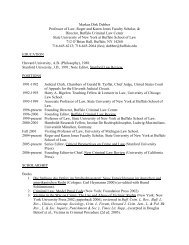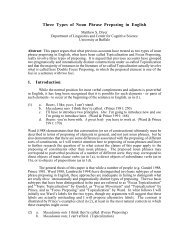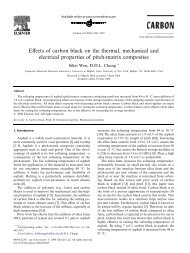Electrophysiological Evidence for Sentence Comprehension - Wings
Electrophysiological Evidence for Sentence Comprehension - Wings
Electrophysiological Evidence for Sentence Comprehension - Wings
You also want an ePaper? Increase the reach of your titles
YUMPU automatically turns print PDFs into web optimized ePapers that Google loves.
with, <strong>for</strong> example, evidentials late negativity similar to the N400’ obtained in ‘tense’<br />
experiment could be obtained.<br />
The obtained dissociation of various elements of syntactic processing confirms<br />
hypothesis 1.1. which states that different aspects of syntax will elicit different<br />
electrophysiological responses. In particular, hypothesis 1.1.1 which predicts ERP<br />
components in ‘case’ experiment can be fully confirmed. In this experiment LAN and<br />
P600 components have been obtained, as predicted by the hypothesis. However, the<br />
hypothesis 1.1.2. stating that ‘tense’ experiment would elicit only P600 showed to be<br />
only partially true: while P600 component was obtained, the experiment had rather<br />
unexpected results: a broad late negative wave on left frontal electrodes labeled N400’.<br />
This result, in turn, corroborates the dissociation between two parts of syntax, as claimed<br />
in the hypothesis 1.1.<br />
5.3.2. Developmental data<br />
Children with TLD. It can be stated that the task of comprehending a sentence is thus<br />
even more demanding than it is generally thought with different processes taking part in a<br />
brief time window. Developmentally, this means that a vast quantity of data should be<br />
processed with a limited mechanism. Delay in latency observed in the TLD children<br />
group can be a good indication of a mechanism that is – at the age of 9-11 – not fully<br />
developed. This is contrary to the predictions stated in the hypotheses 2.1. and 2.1.1.<br />
There<strong>for</strong>e, these hypotheses cannot be confirmed. The hypotheses were based on the fact<br />
that at that age children with TLD have acquired the both tense and case system of<br />
145




